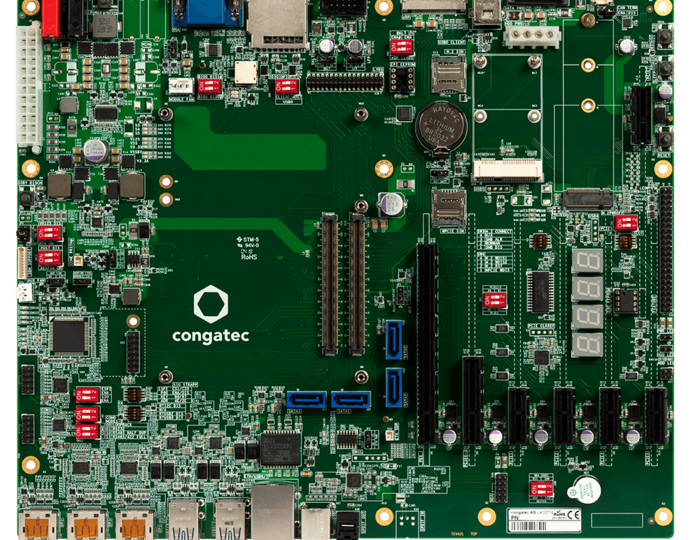COM Express has become a popular standard in embedded computing, offering flexibility and scalability for a wide range of applications. When designing with a COM Express module, it’s essential to follow best practices and consider various factors to ensure optimal performance and reliability. This guide will explore key aspects of designing with COM Express and provide insights to help you make informed decisions.
Understanding COM Express
Before diving into design considerations, let’s briefly review what COM Express is:
- A standardized Computer-on-Module (COM) form factor
- Offers various size options and pin-out configurations
- Provides a modular approach to embedded system design
- Allows for easy upgrades and maintenance
Selecting the Right COM Express Module
Choosing the appropriate COM Express module is crucial for your design:
- Determine your performance requirements
- Consider power consumption and thermal management needs
- Evaluate I/O requirements for your application
- Assess the intended operating environment
- Factor in long-term availability and support
Form Factor Considerations
COM Express modules come in different sizes:
a) Basic (95mm x 125mm)
b) Compact (95mm x 95mm)
c) Mini (84mm x 55mm)
d) Micro (70mm x 70mm)
Select the form factor that best fits your space constraints and feature requirements.
Carrier Board Design Best Practices
The carrier board is where you’ll integrate your COM Express module. Keep these points in mind:
- Follow the PICMG COM Express specification closely
- Ensure proper impedance matching for high-speed signals
- Implement proper power sequencing
- Design for adequate cooling and thermal management
- Consider EMI/EMC compliance early in the design process
Power Design Considerations
Proper power design is critical for COM Express implementations:
- Calculate power requirements accurately
- Implement voltage sequencing as per module specifications
- Consider using multi-layer PCBs for better power distribution
- Implement proper filtering and decoupling
Thermal Management
Effective cooling is essential for COM Express designs:
- Evaluate the thermal characteristics of your chosen module
- Design appropriate heat spreading and dissipation solutions
- Consider active cooling for high-performance applications
- Implement thermal sensors and management systems if necessary
Signal Integrity and EMC
Maintaining signal integrity and electromagnetic compatibility is crucial:
a) Use controlled impedance routing for high-speed signals
b) Implement proper grounding and shielding techniques
c) Consider using buried or blind vias for sensitive signals
d) Perform signal integrity simulations during the design phase
BIOS and Software Considerations
Software plays a significant role in COM Express designs:
- Work with BIOS providers to customize firmware if needed
- Ensure compatibility between the operating system and COM Express module
- Implement proper driver support for all peripherals
- Consider security features and trusted platform modules (TPM) if required
Connector and Interface Design
Pay careful attention to connector and interface design:
- Use high-quality connectors rated for the intended environment
- Implement proper ESD protection measures
- Consider the number of mating cycles required for your application
- Ensure proper alignment and mechanical support for connectors
Testing and Validation
Thorough testing is essential for reliable COM Express designs:
- Perform comprehensive functional testing of all interfaces
- Conduct environmental testing (temperature, humidity, vibration)
- Validate power consumption under various load conditions
- Test for EMC compliance and signal integrity
Scalability and Future-Proofing
One of the key advantages of COM Express is its scalability:
a) Design your carrier board to accommodate future module upgrades
b) Consider implementing unused features for potential future use
c) Document your design thoroughly for easy maintenance and updates
d) Plan for long-term availability of components
Industry-Specific Considerations
Different industries may have unique requirements:
- Industrial: Rugged design, extended temperature ranges
- Medical: Compliance with medical device standards
- Transportation: Shock and vibration resistance
- Aerospace: Strict reliability and certification requirements
Tailor your COM Express design to meet these specific needs.
By following these best practices and carefully considering various design aspects, you can create robust and efficient systems using COM Express modules. Remember that each application is unique, and it’s essential to adapt these guidelines to your specific requirements. With proper planning and execution, COM Express can provide a flexible and powerful foundation for your embedded computing needs.
The modular nature of COM Express allows for easier upgrades and maintenance over the life of your product. By separating the core computing functions on the COM Express module from the application-specific interfaces on the carrier board, you can quickly adapt to changing technology or market demands. This approach can significantly reduce development time and costs for future product iterations while maintaining compatibility with existing systems.





